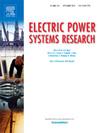Multi-level design optimization of cylindrical linear permanent magnet synchronous generator for wave energy conversion
IF 3.3
3区 工程技术
Q2 ENGINEERING, ELECTRICAL & ELECTRONIC
引用次数: 0
Abstract
This paper presents a multi-level optimization approach to optimize cylindrical permanent magnet linear synchronous generator (PMLSG) which is employed in a wave power take-off system. To improve the market competitiveness of wave energy compared to other renewable energy sources, power density, thrust ripple, and Total Harmonic Distortion (THD) of the Induced electromotive force (EMF) are chosen to be optimization objectives in the design process of the PMLSG. Firstly, the finite element analysis model of PMLSG is established based on the initial design theory of the permanent magnet linear machine, and the comprehensive sensitivity indicts are calculated based on the optimization objective, and the parameters are categorized into non-sensitivity, middle-sensitivity, and strong-sensitivity for the sensitivity to optimization objectives. Secondly, multi-level design optimization method is employed, and different optimization methods are used for different sensitive parameters. The non-sensitivity parameters keep the original design value, the middle-sensitive parameters are adopted the parametric analysis method, and strong-level sensitive parameters are optimized by NSGA-II. Then, a prototype was manufactured according to the optimization results. Finally, the accuracy of the PMLSG design is verified at constant speed. The wave parameters (wave height, frequency) are simulated by MTS100kN testing machine, and the experiment shows that the wave energy can be effectively converted into electric energy at random motion, and proved the correctness of the PMLSG design.
波浪能转换圆柱线性永磁同步发电机的多级设计优化
提出了一种用于波浪发电系统的圆柱永磁直线同步发电机(PMLSG)多级优化方法。为了提高波浪能相对于其他可再生能源的市场竞争力,在PMLSG的设计过程中,选择了功率密度、推力脉动和感应电动势总谐波失真(THD)作为优化目标。首先,基于永磁直线电机初始设计理论,建立了永磁直线电机的有限元分析模型,根据优化目标计算了综合灵敏度指标,并将参数对优化目标的灵敏度分为非灵敏度、中灵敏度和强灵敏度。其次,采用多级设计优化方法,针对不同的敏感参数采用不同的优化方法;非敏感参数保持原设计值,中敏感参数采用参数分析方法,强敏感参数采用NSGA-II进行优化。然后,根据优化结果制作了样机。最后,在恒速条件下验证了PMLSG设计的精度。利用MTS100kN试验机对波浪参数(波高、频率)进行了仿真,实验结果表明,波浪能在随机运动时有效地转化为电能,证明了PMLSG设计的正确性。
本文章由计算机程序翻译,如有差异,请以英文原文为准。
求助全文
约1分钟内获得全文
求助全文
来源期刊

Electric Power Systems Research
工程技术-工程:电子与电气
CiteScore
7.50
自引率
17.90%
发文量
963
审稿时长
3.8 months
期刊介绍:
Electric Power Systems Research is an international medium for the publication of original papers concerned with the generation, transmission, distribution and utilization of electrical energy. The journal aims at presenting important results of work in this field, whether in the form of applied research, development of new procedures or components, orginal application of existing knowledge or new designapproaches. The scope of Electric Power Systems Research is broad, encompassing all aspects of electric power systems. The following list of topics is not intended to be exhaustive, but rather to indicate topics that fall within the journal purview.
• Generation techniques ranging from advances in conventional electromechanical methods, through nuclear power generation, to renewable energy generation.
• Transmission, spanning the broad area from UHV (ac and dc) to network operation and protection, line routing and design.
• Substation work: equipment design, protection and control systems.
• Distribution techniques, equipment development, and smart grids.
• The utilization area from energy efficiency to distributed load levelling techniques.
• Systems studies including control techniques, planning, optimization methods, stability, security assessment and insulation coordination.
 求助内容:
求助内容: 应助结果提醒方式:
应助结果提醒方式:


